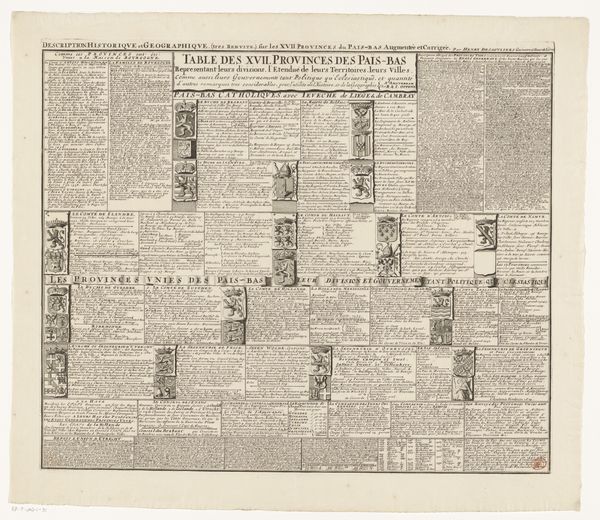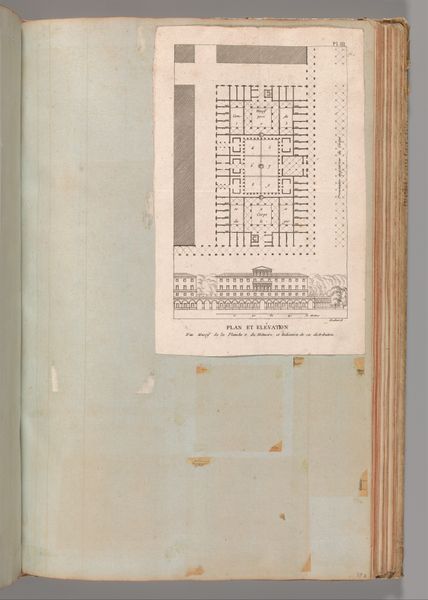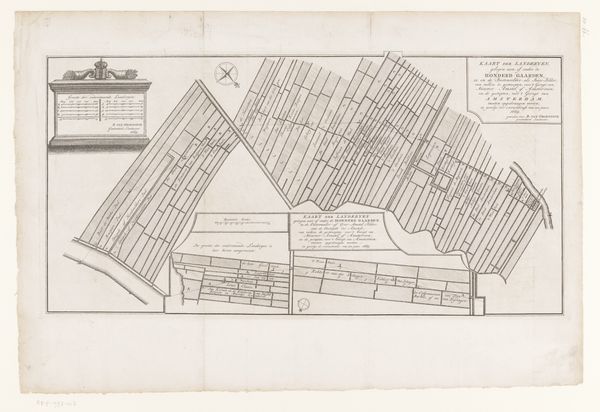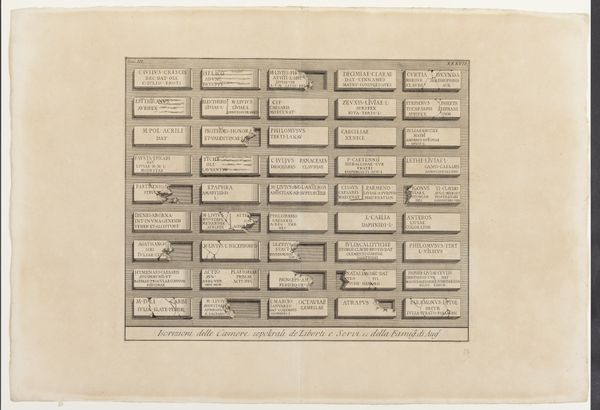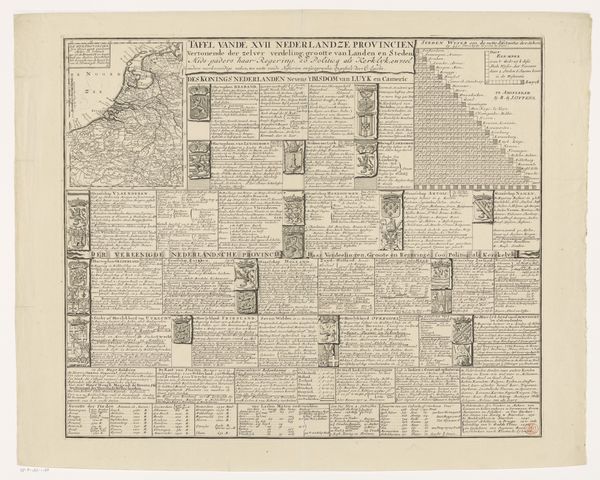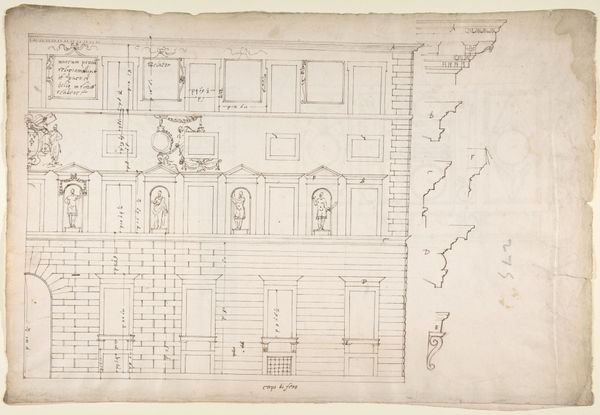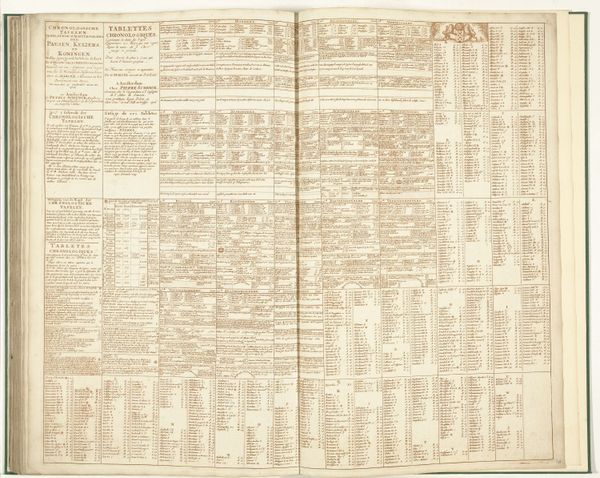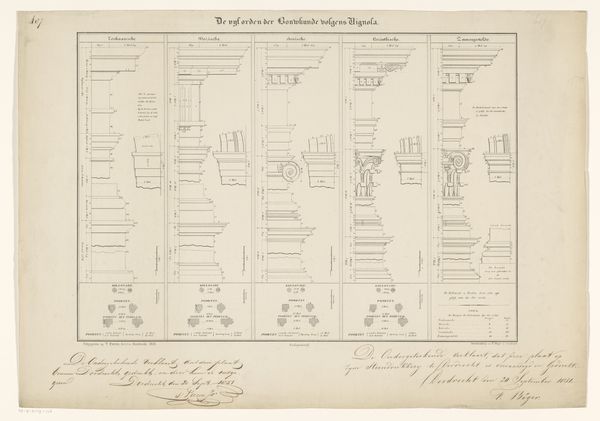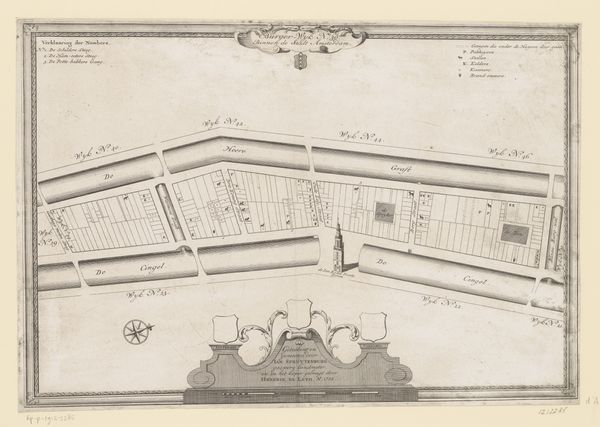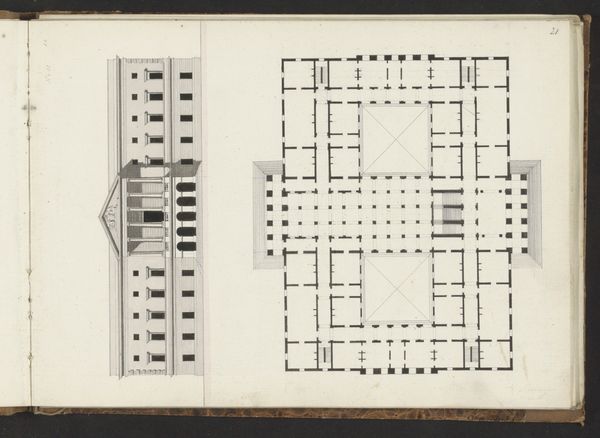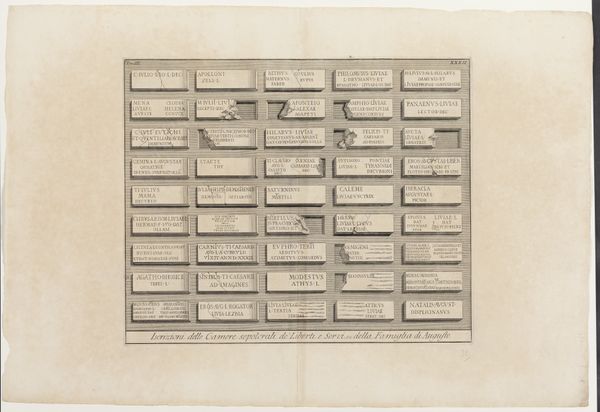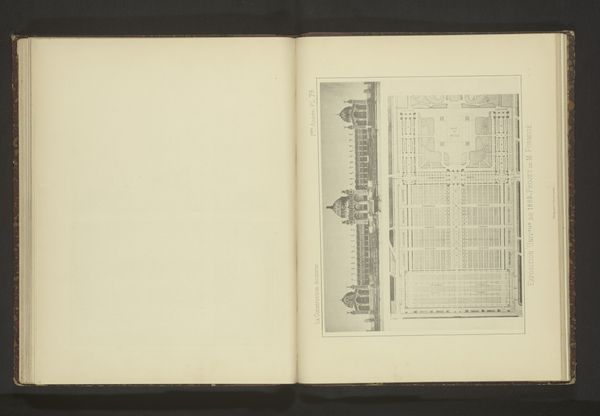
print, engraving
#
dutch-golden-age
# print
#
landscape
#
geometric
#
history-painting
#
engraving
Dimensions: height 174 mm, width 290 mm
Copyright: Rijks Museum: Open Domain
Curator: Looking at this piece, the immediate impression is of organized labor—an almost unsettling level of precision. Editor: That's an interesting take. What strikes me is its historical value as a document. We're looking at a print from 1727, titled "Plattegrond van de Compagnietuinen te Kaapstad"—essentially, a map of the Dutch East India Company's gardens in Cape Town. Curator: Right. So much can be discussed on the level of production! Think of the engraver meticulously transferring the garden plan onto the copper plate. The skill required, the labor involved, is quite evident. The sharp lines, uniform shapes. Editor: Precisely. The Dutch East India Company held immense power, and this garden represents their attempt to control and cultivate not only the land but also resources, including food and medicinal plants, in this new territory. Its geometrical layout embodies that colonial control, creating visual order amid potential chaos. Curator: It's about making nature predictable, right? I mean, look at these rigorously organized plots. Each one contains different crops—I notice cabbages, legumes and onions listed along the border. The entire scene highlights a planned and rational manipulation of nature for commodity production. Editor: Yes, a space of vital economic and social importance! It speaks to Dutch colonial ambition, illustrating their commitment to transforming Cape Town into a provision station that serves their trade routes. Curator: I wonder how many workers—slaves, most likely—toiled in these gardens. The engraving only offers the blueprint; the reality would involve forced labor to render this ideal manifest. The lack of human presence here ironically speaks to this oppressive system. Editor: Exactly. The map highlights power dynamics—those who planned and controlled the garden versus those who physically maintained it. Furthermore, distributing this image would bolster this claim and sense of authority and power. Curator: In conclusion, beyond the clean, geometric aesthetics of the Dutch Golden Age style and precision inherent in the engraving medium, the work provides much insight to consider when thinking about how landscapes of production relate to a society's colonial expansion and ambitions. Editor: Absolutely. This image reveals so much about the interwoven politics of resources and representation, while raising awareness of colonial practices that deeply transformed Cape Town.
Comments
No comments
Be the first to comment and join the conversation on the ultimate creative platform.
